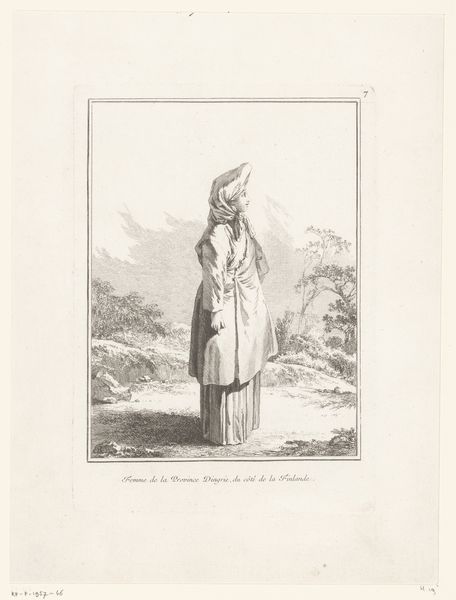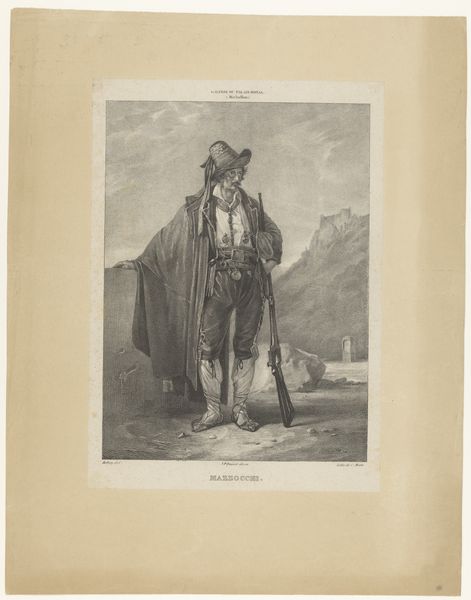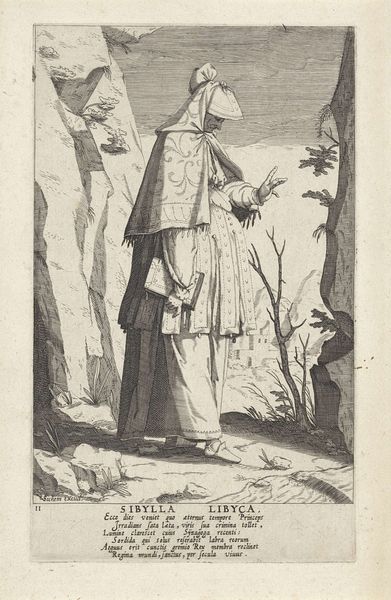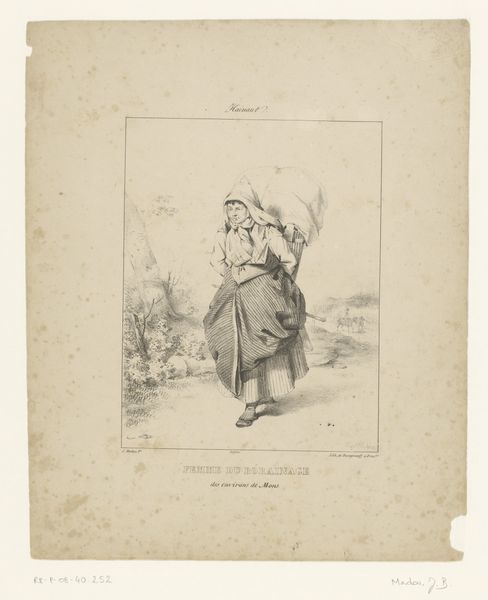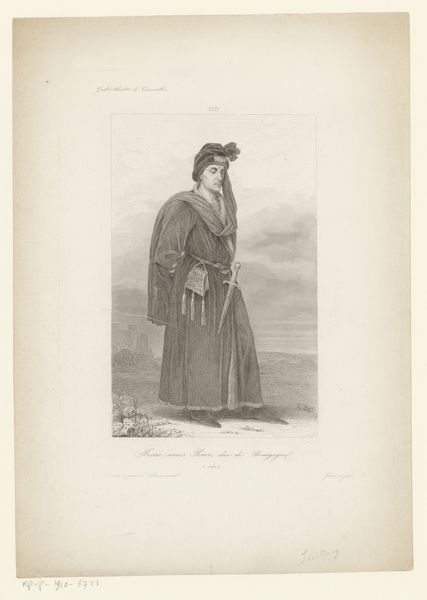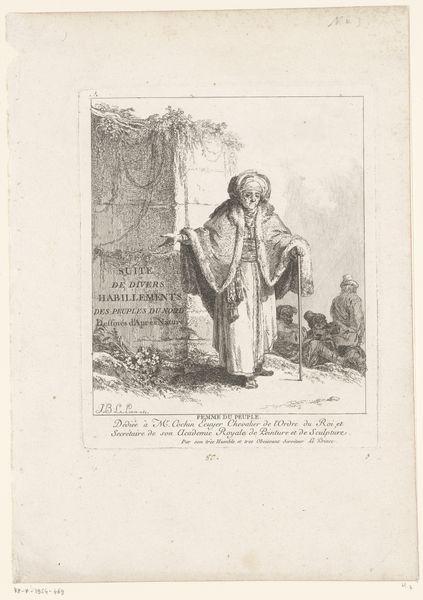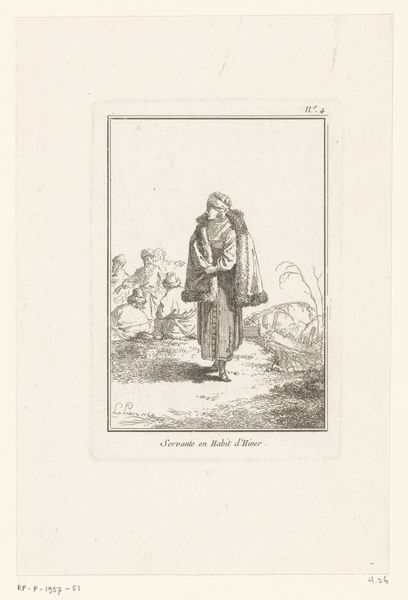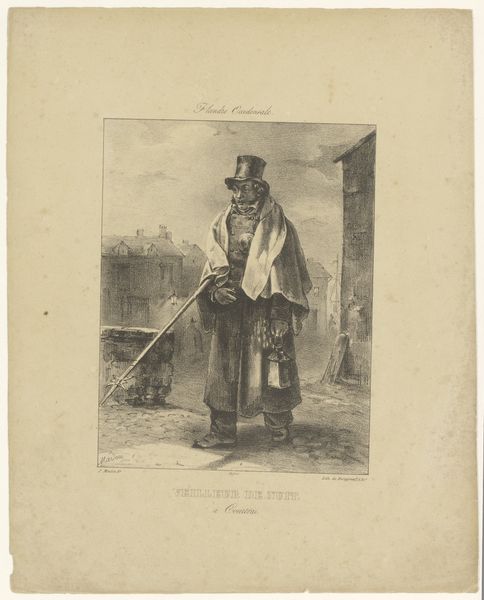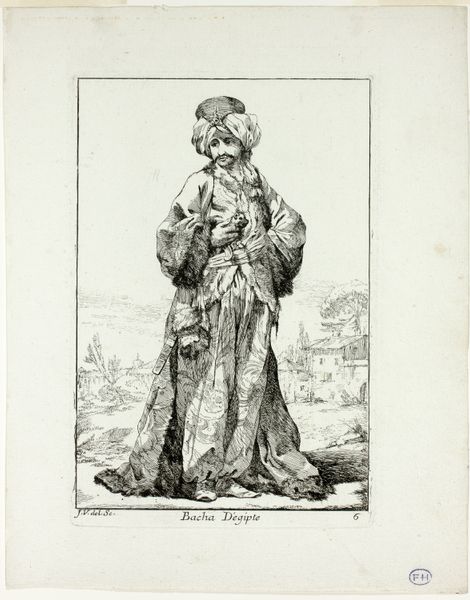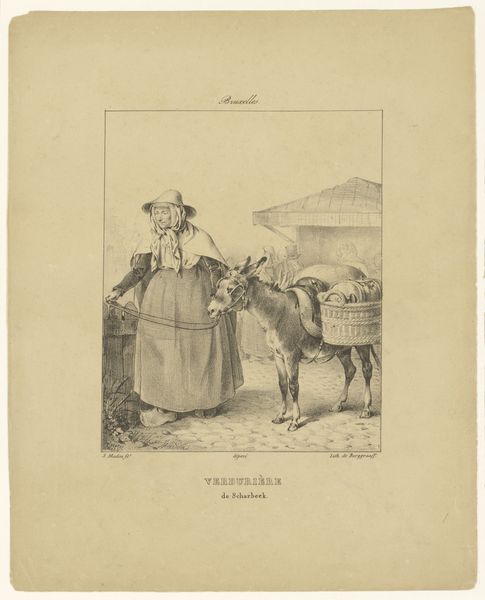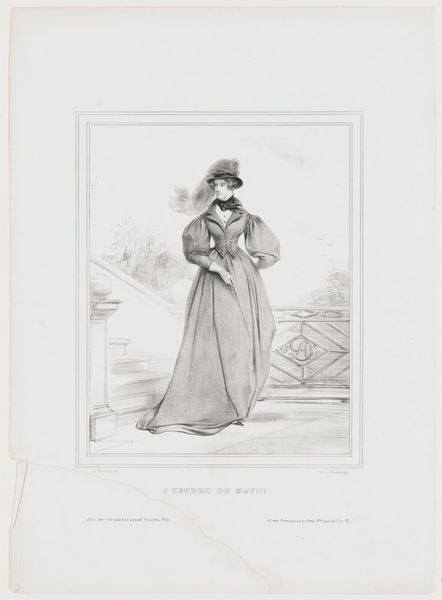
Nederlandse officier uit het garnizoen van de citadel van Antwerpen 1833
0:00
0:00
print, paper, engraving
#
portrait
#
ink paper printed
# print
#
old engraving style
#
paper
#
romanticism
#
history-painting
#
engraving
Dimensions: height 356 mm, width 268 mm
Copyright: Rijks Museum: Open Domain
Curator: Let’s take a look at Nicolas Toussaint Charlet's "Nederlandse officier uit het garnizoen van de citadel van Antwerpen," created in 1833. Editor: My goodness, he looks weary, doesn't he? Stoic, standing in what seems to be a ruined landscape, draped in an almost theatrical cloak. It’s wonderfully somber. Curator: Indeed. Charlet, celebrated for his depictions of military life, particularly ordinary soldiers, here presents an officer—presumably during the siege of Antwerp. Note the medium: engraving, printed on paper. The very act of printing suggests accessibility, wider circulation. Editor: That contrast is interesting—the artistic romanticism lavished on a mass-produced print. You can almost smell the ink. What paper was being made then, I wonder, and by whose hands? This isn't just about glorifying an officer; it's a testament to the engraver's craft. Consider the labor involved, translating the original drawing—Charlet probably didn't even do the printing! Curator: Precisely. It speaks to the romantic obsession with history, but seen through a more democratic lens perhaps, bringing a high-status subject into the realm of more accessible art forms. There’s an intimacy created, despite the rigid posture of the subject. He seems tired, real. Not heroic in the classic sense. Editor: And look at the detail achieved. Think of the coppersmith, painstakingly incising lines to suggest depth, texture in that cloak. It's a dialogue between art and industry—art object meant for consumption. Is he weary from battle, or from posing, I wonder? Maybe both? It is a posed portrait meant for propaganda as well as admiration of craftsmanship. Curator: It adds another layer of meaning, doesn't it? He becomes a symbol of resilience perhaps, rendered through the very industriousness he might have been defending. An officer represented as something that everyone can take home. It’s a brilliant tension. Editor: Agreed. Seeing this portrait forces me to look beyond the image and towards the physical making. Considering all of the invisible work embedded into each stage of the production gives this "Dutch officer" even more of a story to tell.
Comments
No comments
Be the first to comment and join the conversation on the ultimate creative platform.
